A potting station is where the rhythm of gardening begins, not with grandeur but with quiet repetition. The cottagecore style adds warmth and lived-in texture to these spaces. It values materials that age well, small imperfections that tell a story, and arrangements that feel natural rather than staged. Here are twelve ideas that capture that approach, each balancing function with a sense of calm and craftsmanship.
Quickly Find Potting Stations For Cottage Gardens
1. Rustic Table Under Blooming Roses
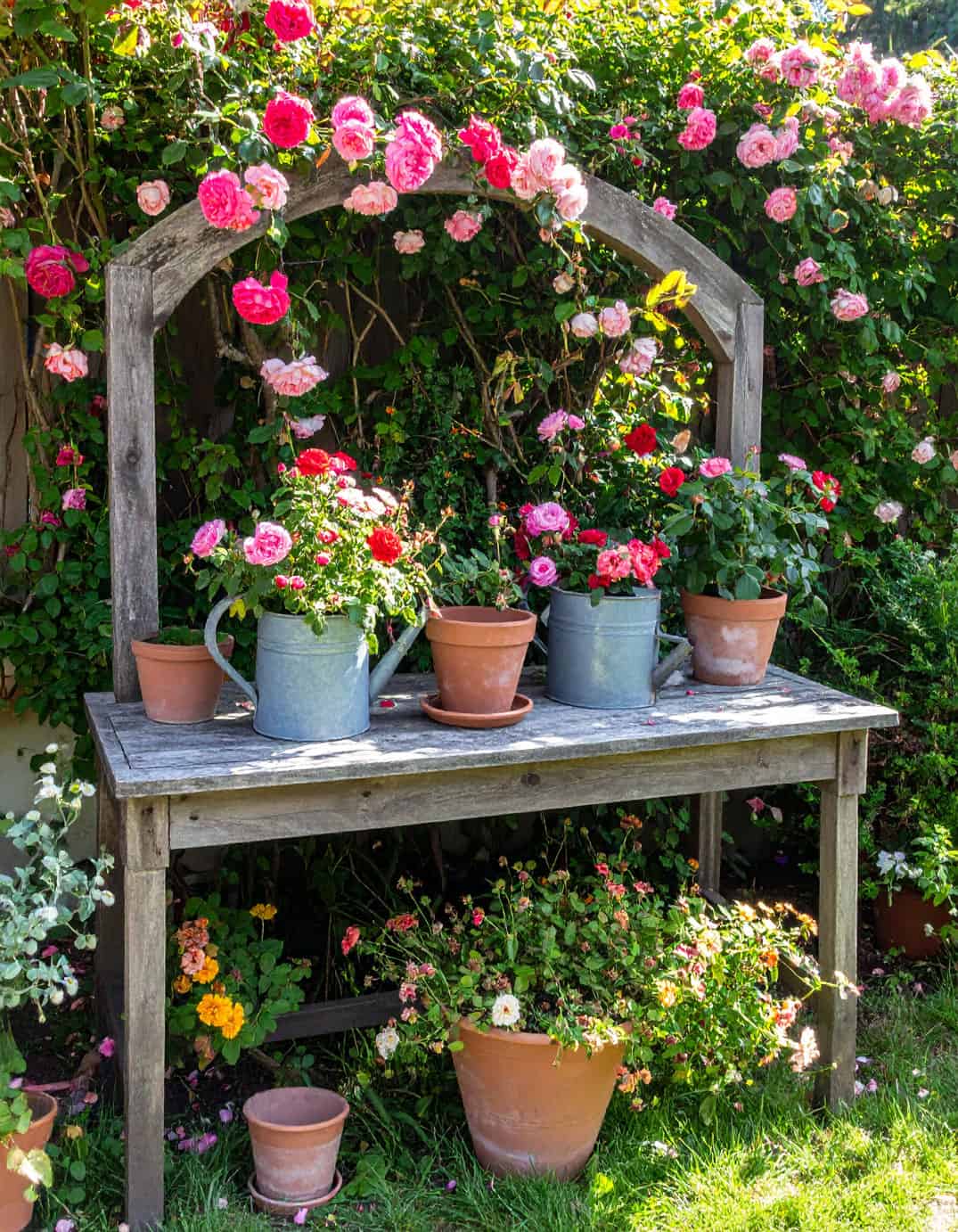
A simple wooden table placed beneath climbing roses creates a corner that feels enclosed and fragrant without effort. The petals that fall onto the work surface do not need to be swept away; they belong there. A table like this can be built from reclaimed boards or an old dining top, and the climbing roses provide shade in late spring.
Keeping a few terracotta pots and a metal watering can nearby gives the area both purpose and familiarity. When I picture this setup, I think of it as a place to transplant seedlings while bees move quietly between blossoms. It is functional rather than decorative, yet it carries its own quiet beauty.
2. Repurposed Farm Bench Potting Corner
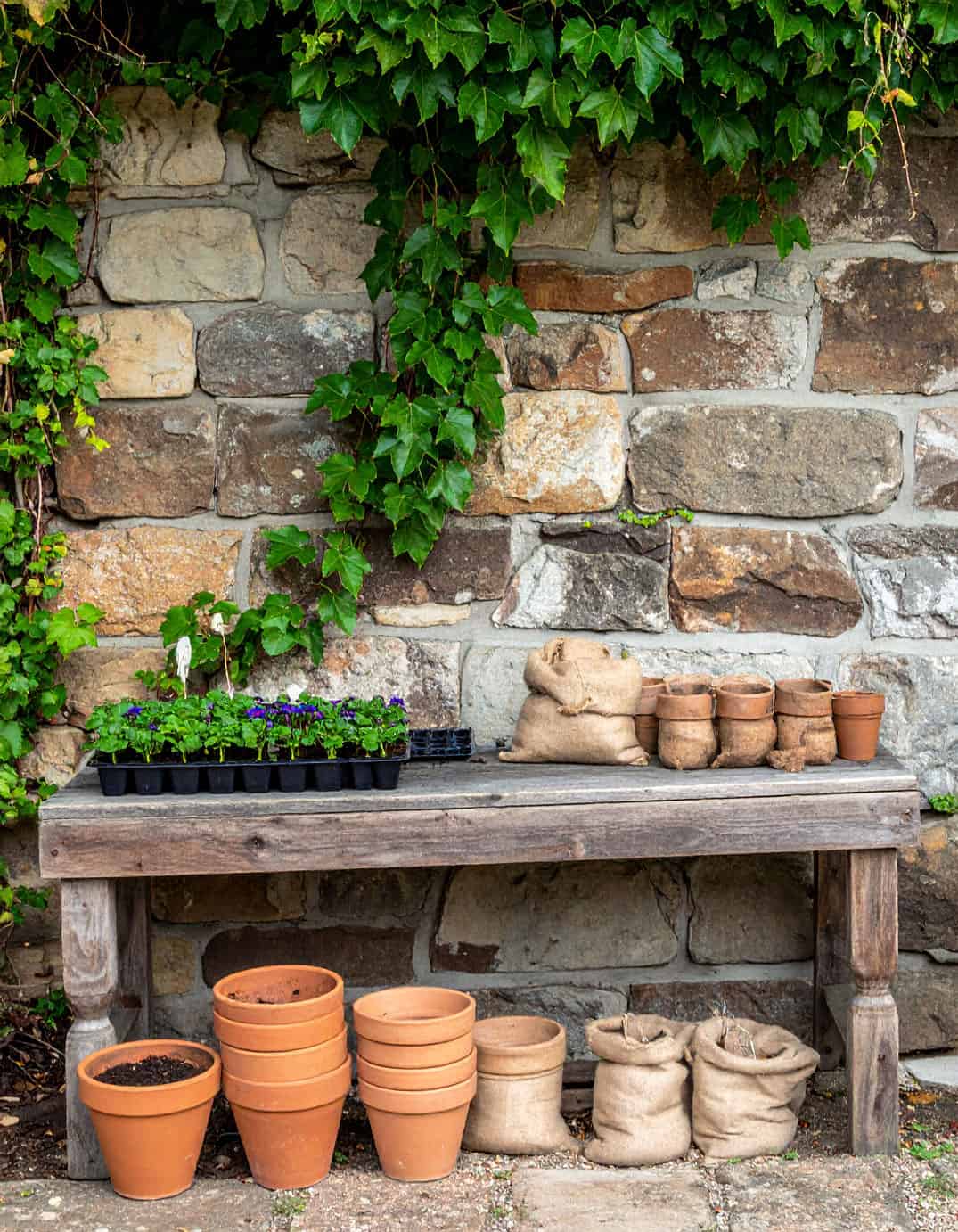
Using an old farm bench as a potting surface works well when space is limited. Its long, narrow form suits seed trays, and the worn patina fits the cottage aesthetic. I often look for benches that have a stable top but weathered legs, since that mix of solid and aged makes them perfect for this kind of project.

Arranging burlap sacks or wire baskets underneath adds storage and keeps tools within reach. Ivy or ferns growing near the bench help blend it into its surroundings. The result feels as if the station has always belonged to the garden rather than being added later.
3. Potting Shed With Lace Curtains
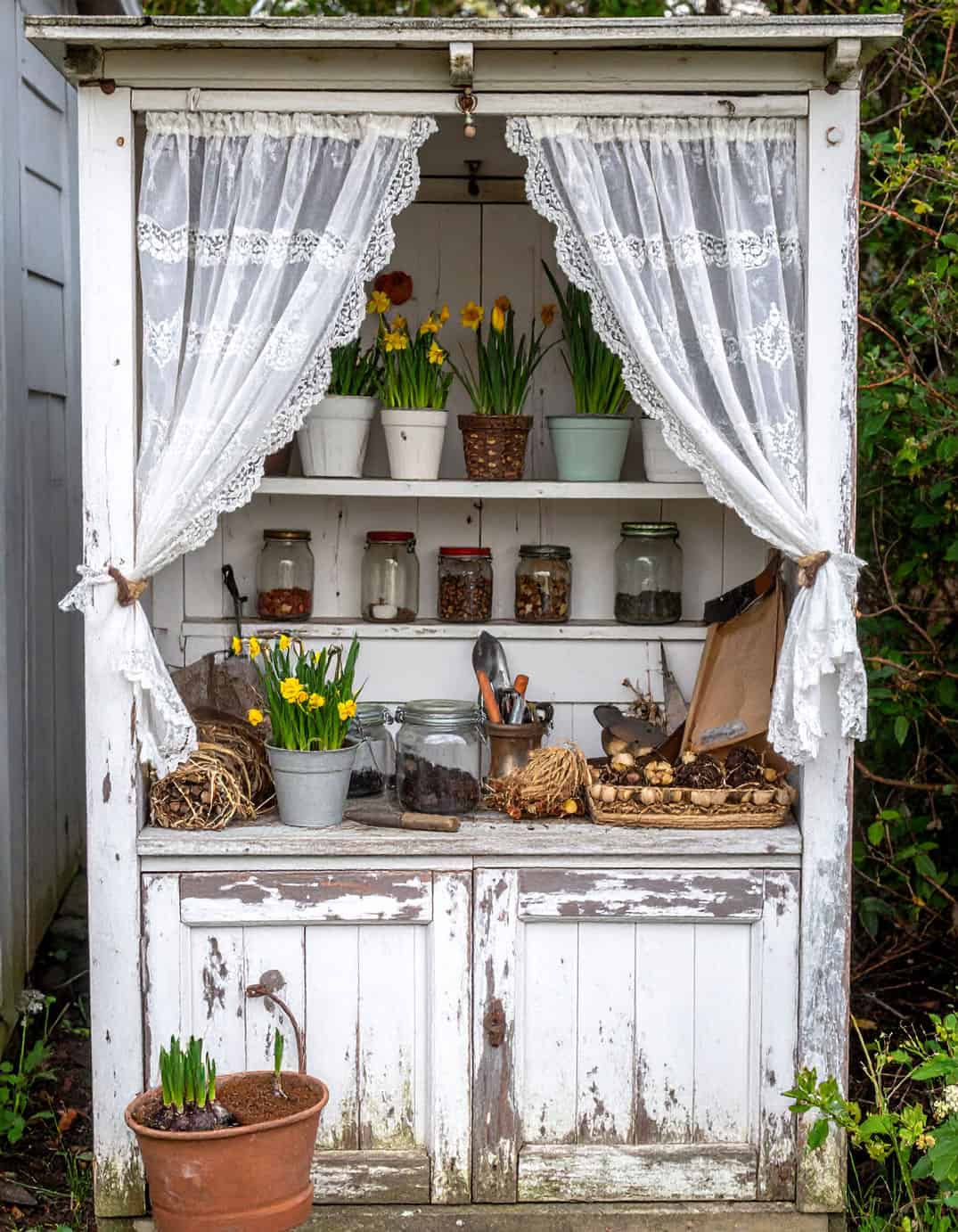
A small shed can become the heart of a cottage garden when fitted with light materials and soft edges. Lace curtains, though simple, filter sunlight and cast intricate shadows that change throughout the day. Wooden shelves inside can hold jars of seeds, bits of twine, and dried flowers. Useful items can be displayed openly and within easy reach.
I prefer paint that is slightly chipped or matte rather than glossy. The goal is to make the space comfortable to step into, not pristine. Even a single chair inside turns a working shed into a place to pause and plan.
4. Wicker and Willow Potting Nook
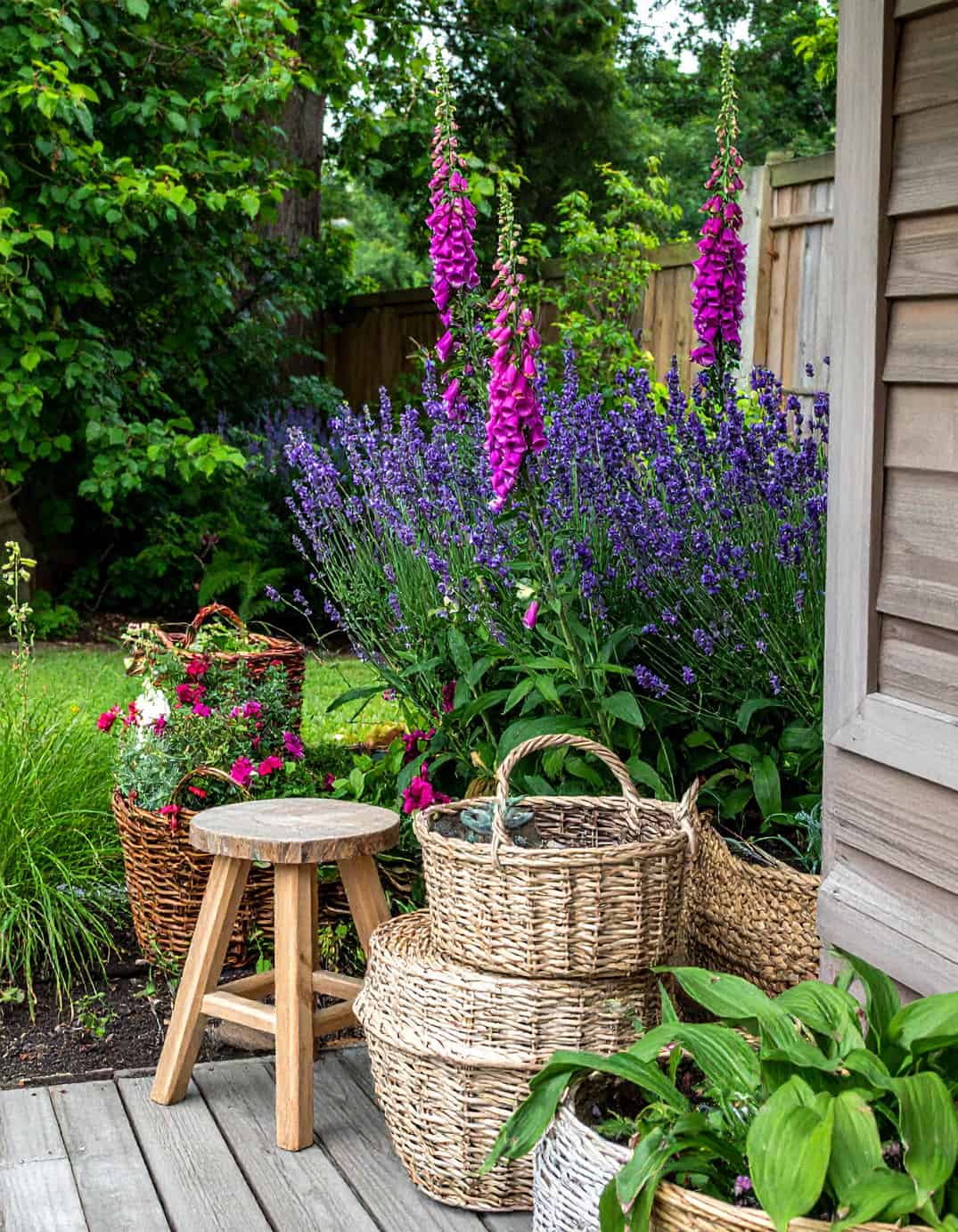
A potting nook made with natural fibers feels cohesive and flexible. Wicker baskets hold bulbs, while willow planters line the wall in mismatched sizes. These materials breathe, which helps keep tools and seeds from trapping moisture. They also create a gentle continuity with nearby plants.
Placing a stool nearby invites longer sessions. It is practical when sorting small items or repotting herbs, but it also slows the pace. The tactile quality of wicker softens the space and ties the objects together in a way that feels organic.
5. Iron Sink Basin Potting Setup
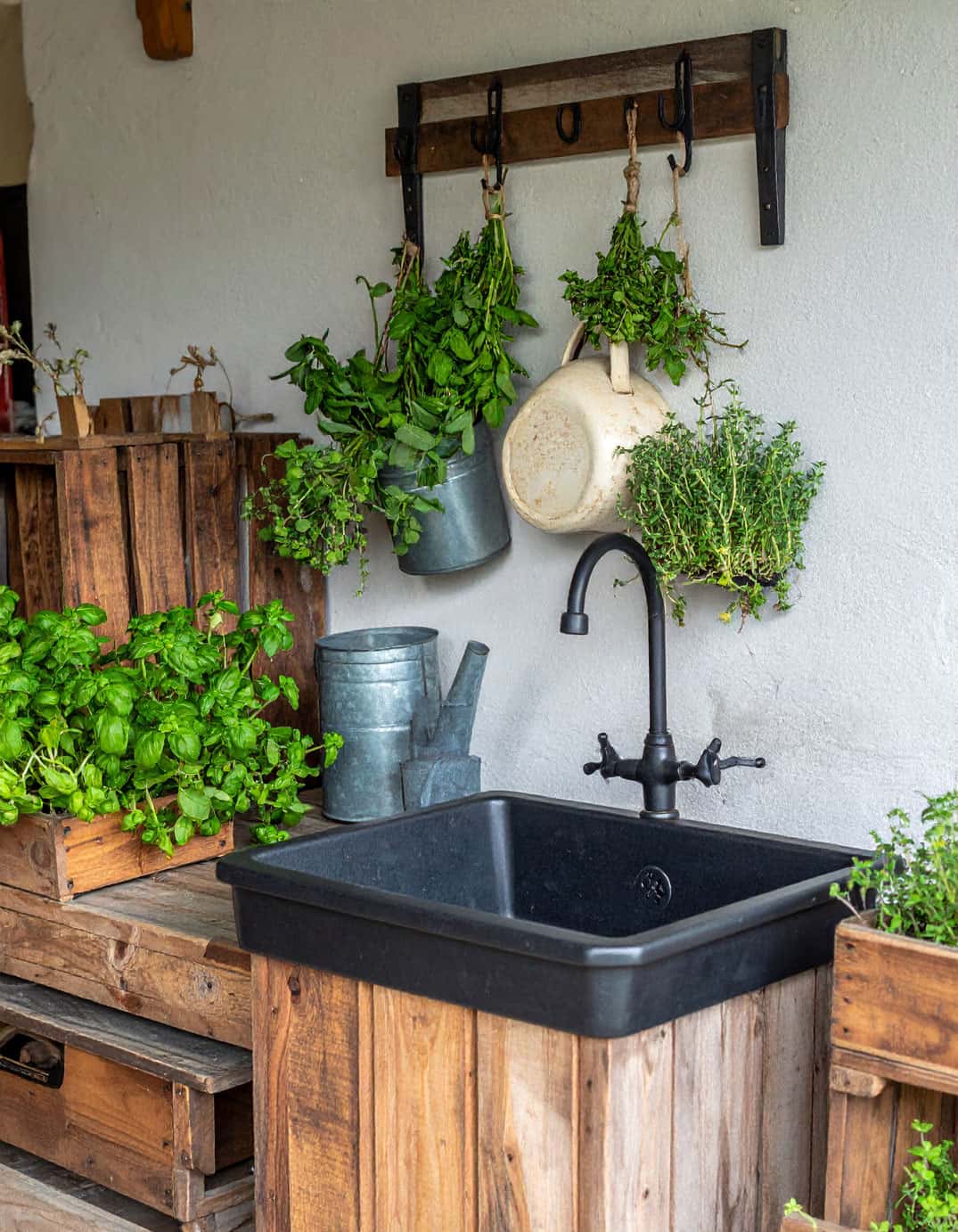
An old iron sink works surprisingly well as a potting station. Its depth keeps soil contained, and the material can handle moisture year-round. I have seen them mounted on reclaimed wood frames or supported by stone legs. Galvanized watering cans and tin trays fit naturally beside it.
Drying herbs from a beam overhead completes the picture. This combination of metal, wood, and plant life captures a balance between utility and nostalgia. A sink that once served a kitchen or barn takes on a second life in the garden.
6. Reclaimed Shutter Potting Backdrop
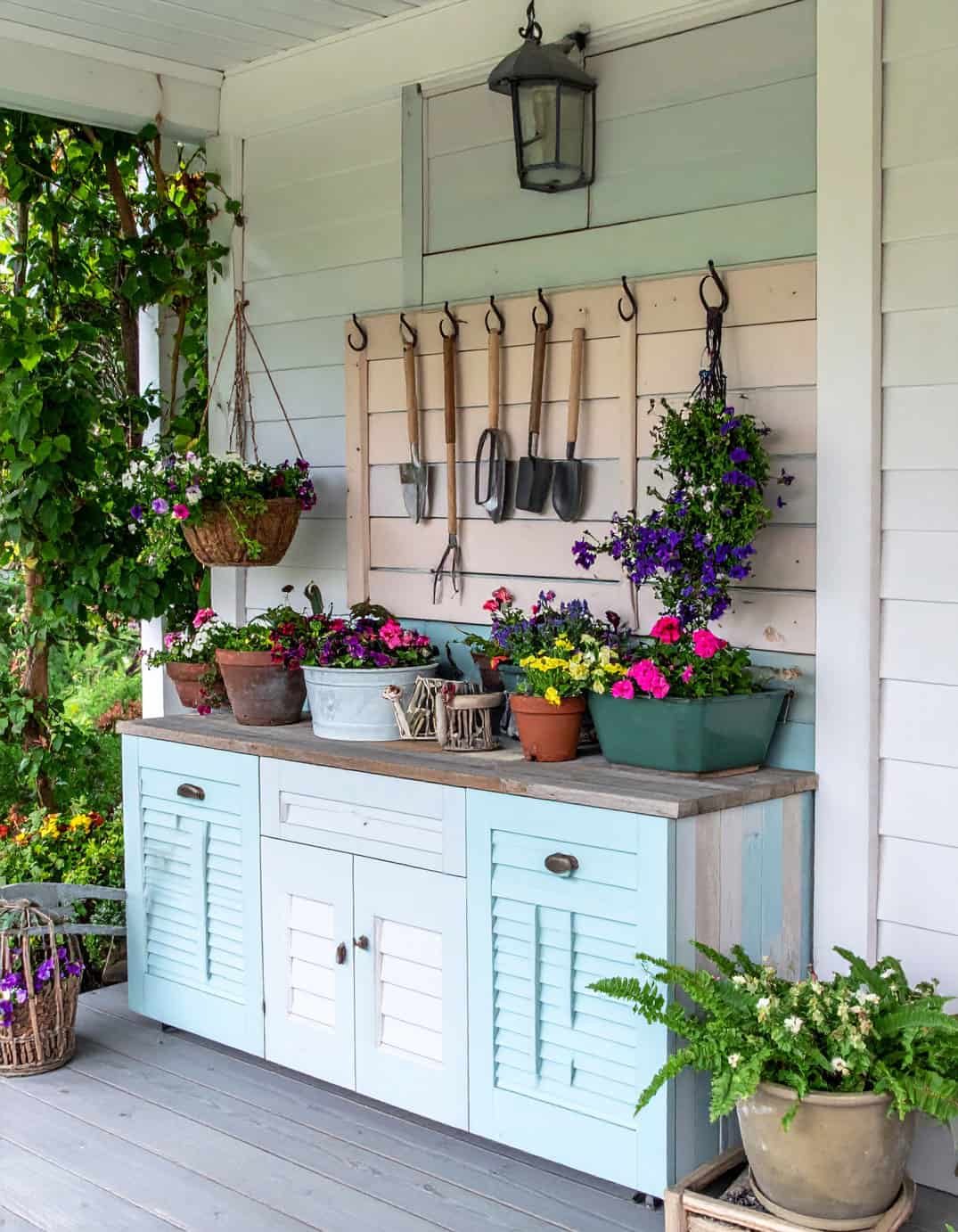
Old shutters make a versatile backdrop for tools and planters. Hinged together, they can form a free-standing divider or lean against a wall for vertical storage. Their slats are ideal for hanging baskets or clipping seed packets in view.
Painting them in muted tones such as sage, cream, or dusty rose ties them to the cottage palette. Over time, chips and sun wear improve the look rather than detract from it. It is a project that gains more character with each passing season.
7. Garden Table Beneath a Wisteria Trellis
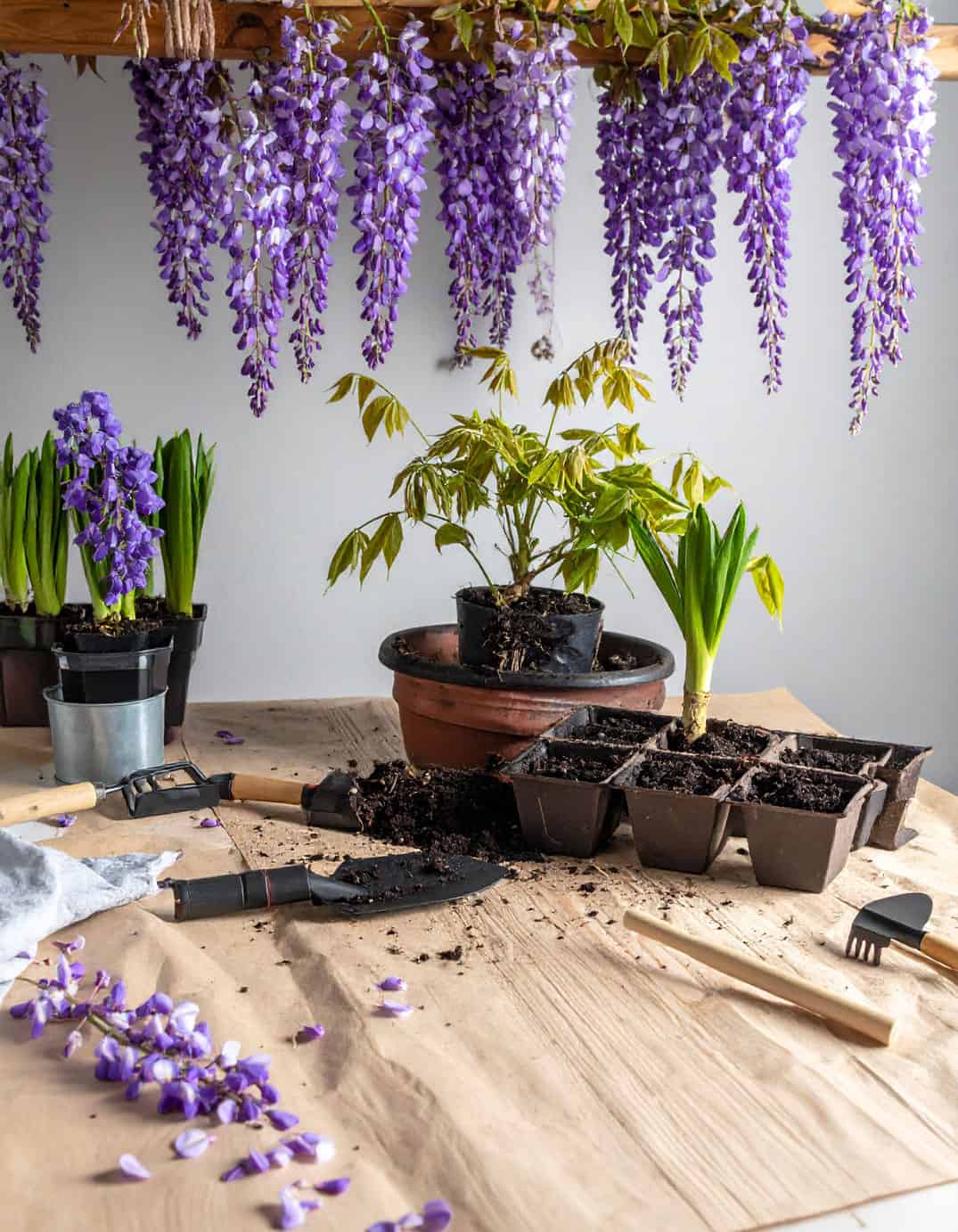
Working under a wisteria trellis feels seasonal and fleeting. Each spring brings a few short weeks of shade and scent before the petals drift away and the light returns. A simple table underneath, perhaps made from a salvaged door on sawhorses, can be enough to define the space.
Keeping surfaces uncluttered helps highlight the contrast between growth and decay. Pots waiting for planting, a scattering of petals, and the gradual change in light all work together to mark the passage of time. It is a space that evolves gently with the season.
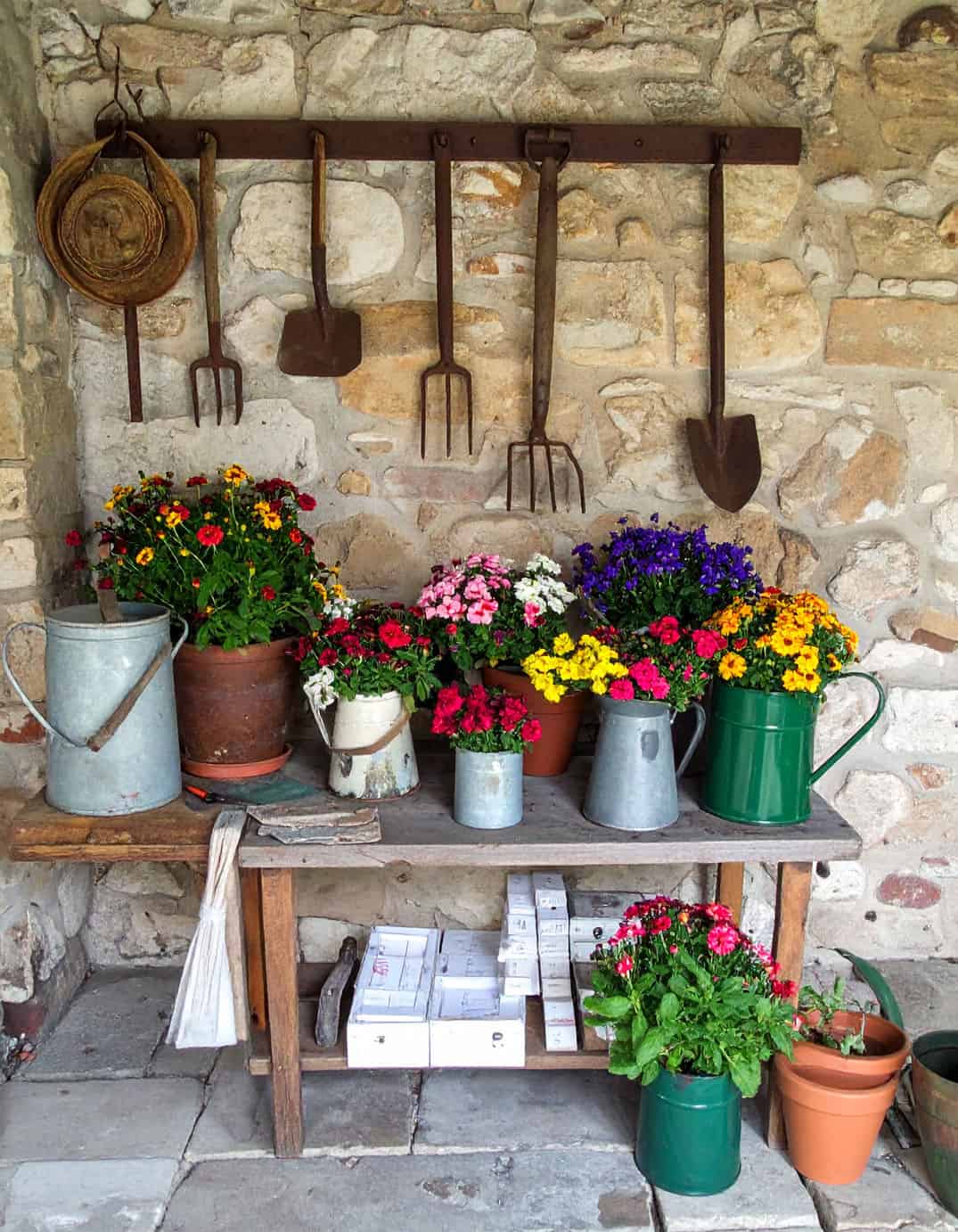
Setting a potting station against a stone wall creates a clear backdrop and a sturdy anchor for storage. Hanging tools directly on the wall keeps them visible and easy to reach. Rusted metal and aged handles look appropriate here rather than neglected.
Adding enamel jugs or clay pitchers filled with flowers introduces a note of softness. The texture of the stone brings out the character in every object, from chipped paint to polished handles that have been worn smooth by years of use.
9. Floral Chaos Potting Area
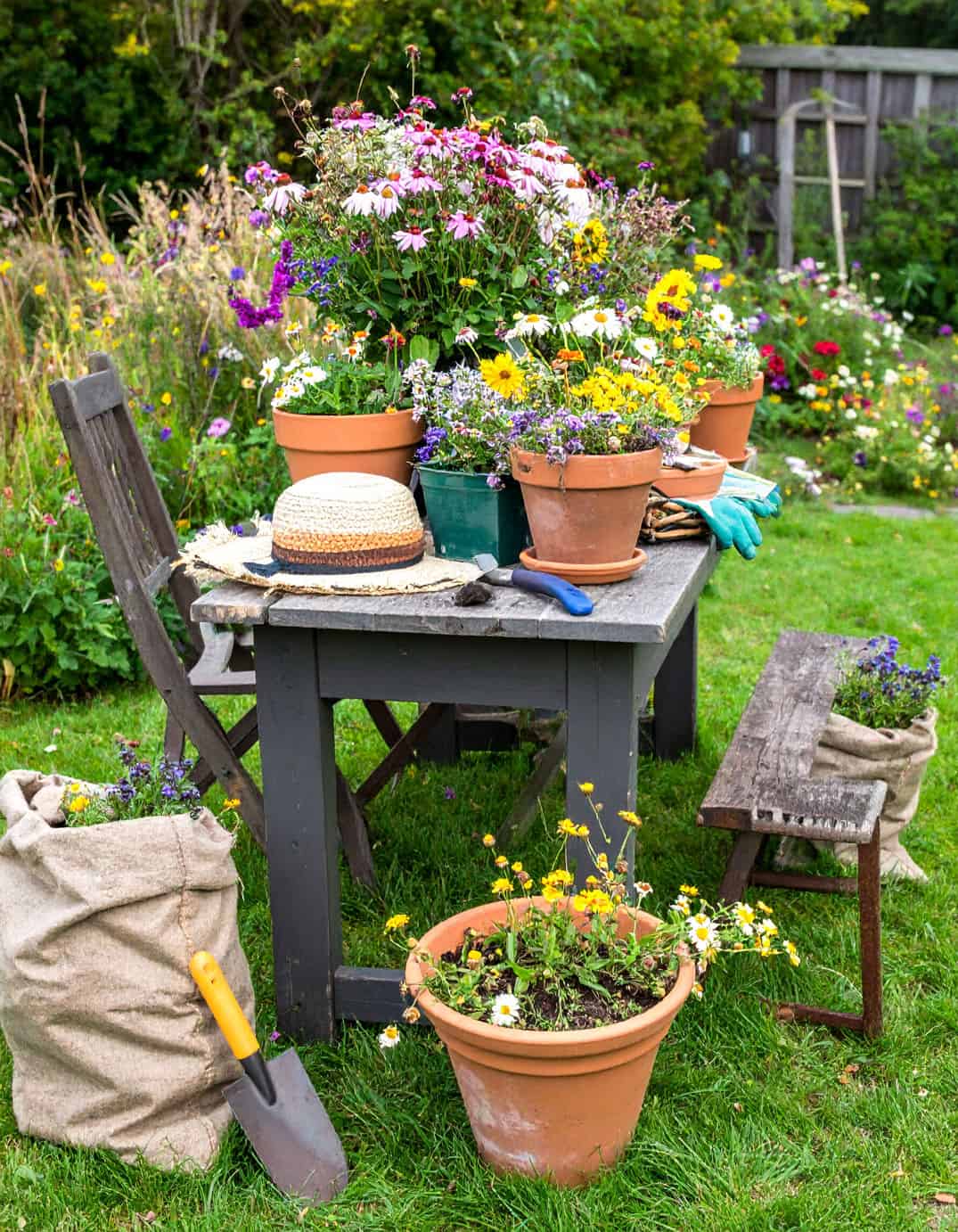
Not every station needs to look organized. A table crowded with soil, cut stems, and half-filled pots can feel alive and authentic. This kind of creative mess signals a gardener at work rather than a space curated for display.
Allowing some disarray gives room for improvisation. When flowers spill over or soil scatters, it becomes part of the environment rather than a flaw. The goal is rhythm instead of control, creating a space that changes daily and rewards steady attention.
10. Cottage Greenhouse Corner
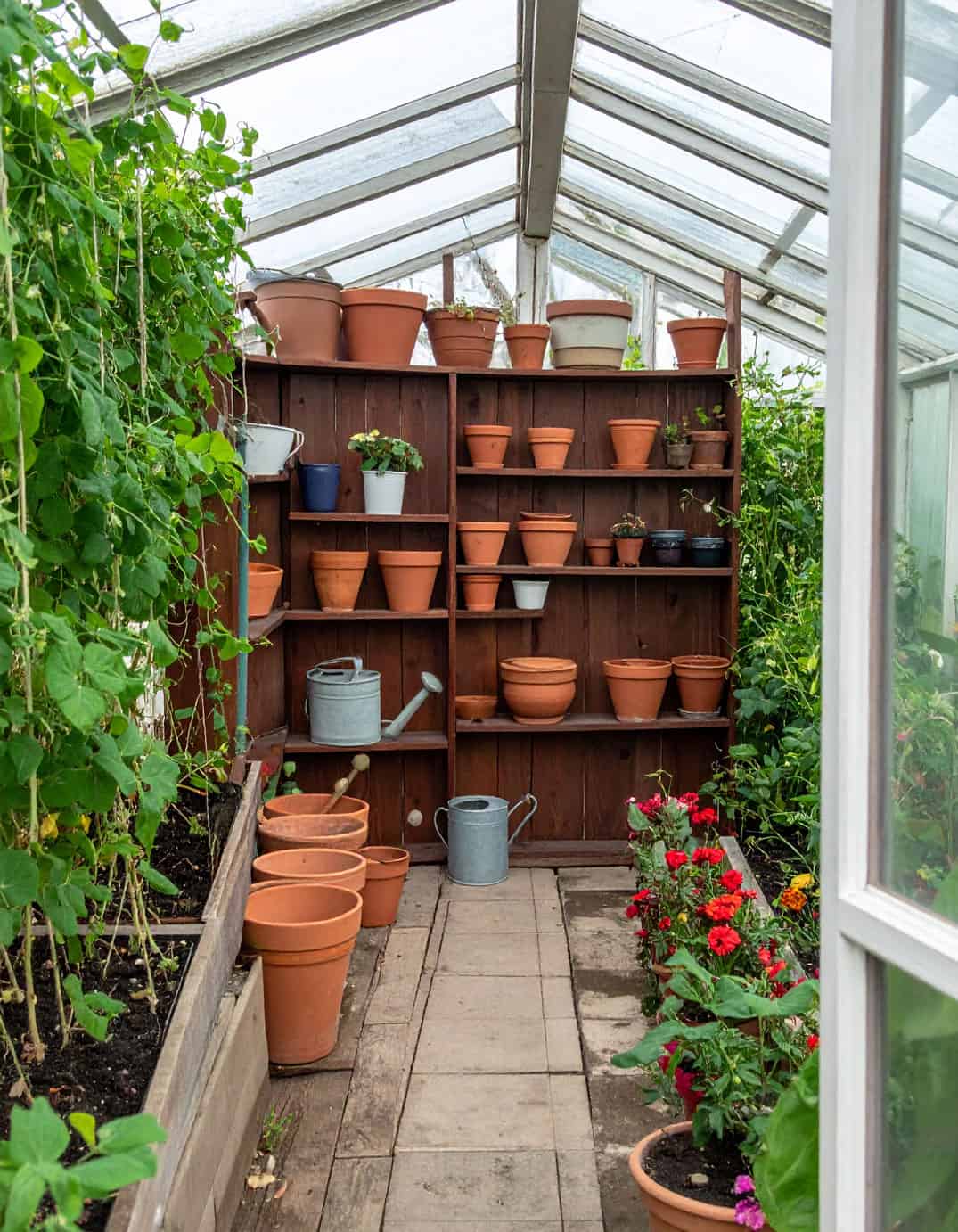
Inside a greenhouse, light becomes the most important design element. Wooden shelving lined with terra cotta pots absorbs and reflects it in warm tones. I prefer natural finishes that darken with age because they make the plants appear more vibrant.
Positioning a small table or stool nearby turns this corner into a quiet workspace. Even when nothing is being planted, the sight of condensation on glass and orderly rows of seedlings brings calm and focus. Every surface serves a clear purpose without appearing forced.
11. Herb-Filled Potting Ledge by a Window
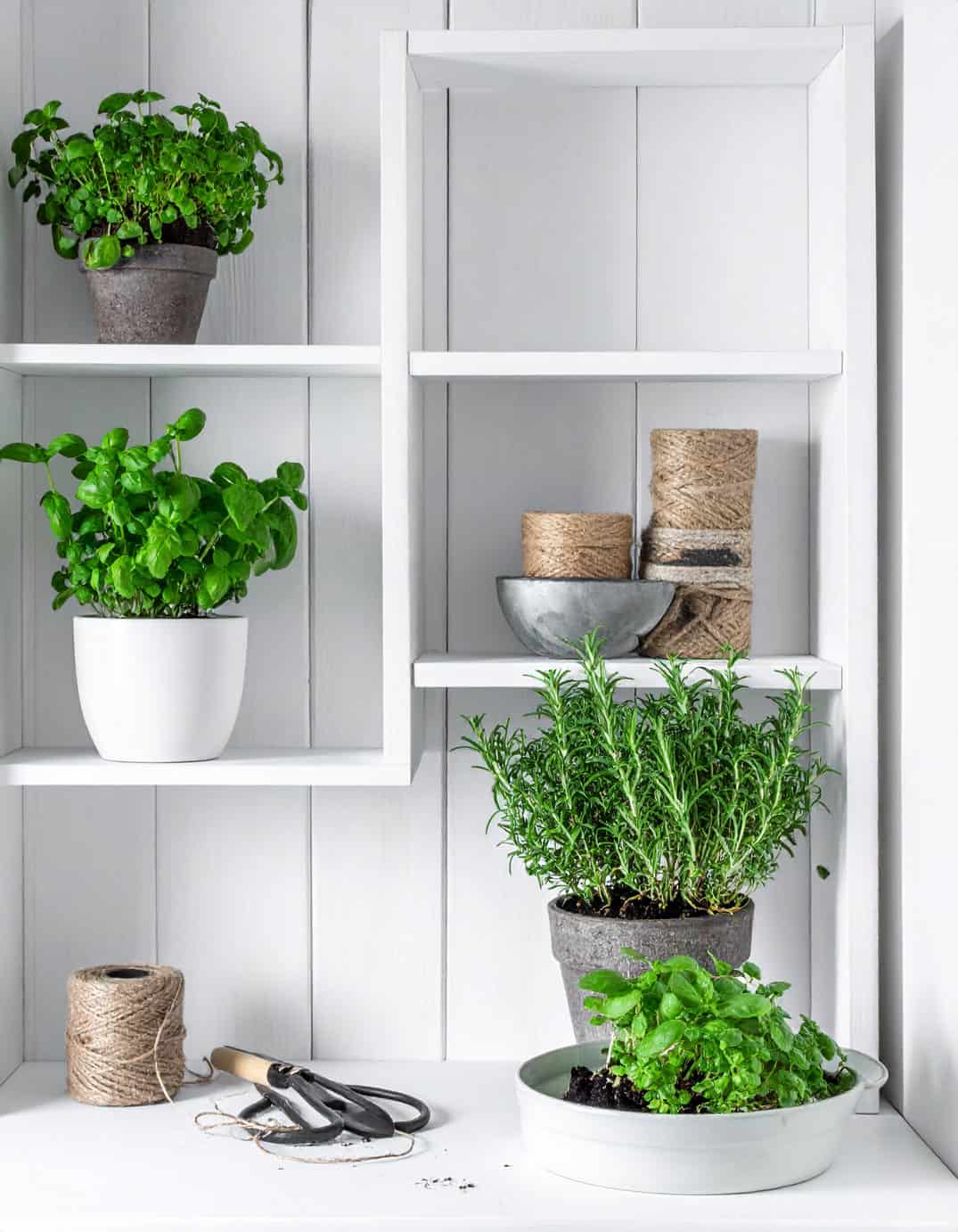
An indoor windowsill can double as a potting ledge for small tasks. Herbs such as thyme, basil, and oregano thrive in bright light, and their scent fills the air while you work. Keeping jars of twine and wooden spoons nearby adds to the rhythm of use.
This setup works especially well in colder months or for anyone without outdoor space. It offers a way to stay connected to the growing cycle year-round, with just enough room for soil, tools, and small moments of attention. Simplicity becomes its own form of satisfaction.
12. Rainy Day Potting Scene
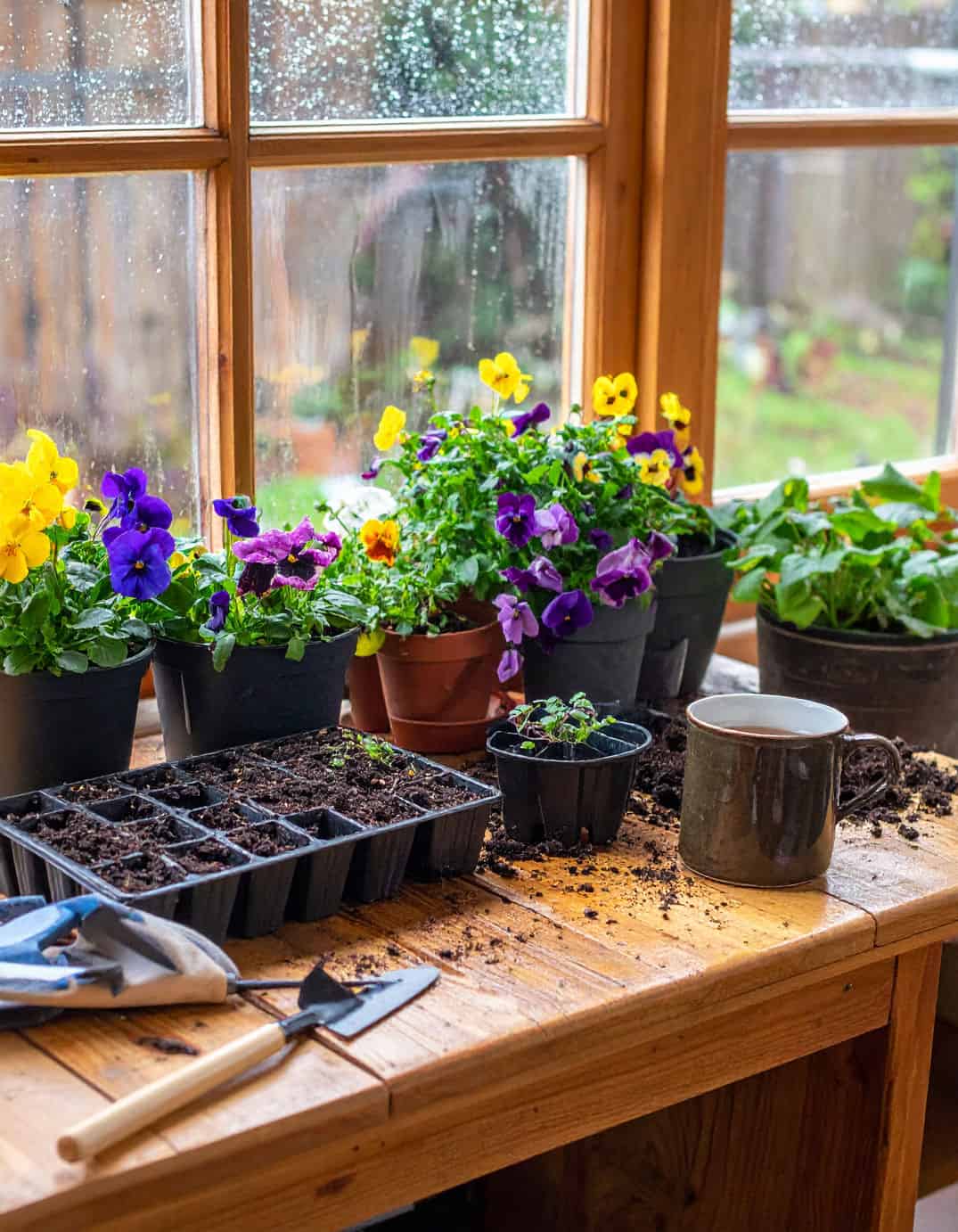
Some of the most satisfying gardening happens indoors while it rains. A potting table near a window becomes a place to work slowly, with raindrops marking time outside. A cup of tea beside seed trays or violets adds to the quiet atmosphere.
The sound of rain on the roof or glass keeps the space grounded. On days like this, gardening feels less about productivity and more about presence. The mix of soft light and familiar tools creates a mood that stays with you long after the rain ends.
Final Thoughts
A cottagecore potting station does not rely on design rules. It grows from habit, resourcefulness, and respect for materials that endure. Whether it is a bench under roses or a small corner near a window, the purpose remains the same: to create a space that welcomes both work and pause. The imperfections make it believable, and the time spent there is what gives it meaning.

